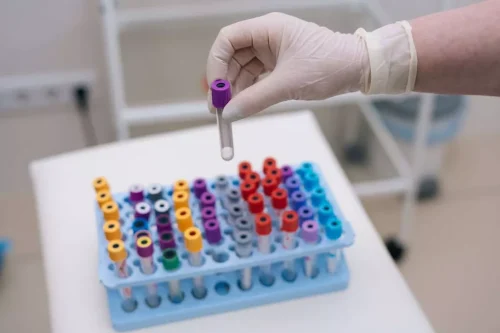
This subtype is the second largest form of alcoholic making up 21.1% of the total. This subtype is also mostly male (over 75%) and has often been addicted to alcohol since being as young as 18. They also frequently suffer from other forms of mental illness (OCD, bipolar disorder, depression) or other substance abuse disorders. Some people don’t even realize their drinking is an issue — they see it as part of who they are. No matter what subtype you are, long-term alcohol addiction can damage your physical, mental and emotional health and impact the people you care for.

Treating Alcohol Use Disorders

They are mostly middle-aged with high rates of co-occurring disorders including antisocial personality disorder. This group also has the highest likelihood of a family history of alcohol use disorder. Since their condition is the most serious, people with chronic severe AUD are also the most likely to seek treatment. Most people of this subtype are employed, although their income level is likely to be lower than the functional subtype. Almost all of these individuals suffer from clinical depression, antisocial personality disorder, bipolar disorder, or anxiety disorder.
How to Help a Loved One Dealing with AUD
The best type of treatment will depend on your treatment needs and individual circumstances. There’s no single solution for alcohol addiction, and treatment is highly individualized. In that case, it’s best to speak with your doctor or an addiction treatment professional at a reputable detox or rehab center like Nova Recovery Center. Additionally, young antisocial alcoholics have a high probability of having other substance use disorders. About three-quarters of them are regular smokers, and 66 percent meet the marijuana abuse/dependence criteria. Many also have a high probability of cocaine use disorder and opioid use disorder.
We can help you along the path to a healthy, successful, and stable life.

Chronic severe alcoholics have the highest rate of family members who also experience alcohol dependence at 77%. Since the causes of alcoholism vary from person to person, the best treatment for one might not work for the next. While treatment for all alcoholics remains generally similar, some may respond better to different addiction support types than others.
Young adults comprise the largest portion—31.5%—of people with alcohol use disorder in the United States. And within that group, college students are most likely to engage in alcohol misuse and develop AUD. This second stage involves the withdrawal symptoms a person experiences when they stop drinking after becoming addicted. The basal ganglia have become reliant on alcohol for activation; without it, a person may feel anxious and irritable. The lack of alcohol can also activate the extended amygdala, making them feel more stressed. The negative emotional states in this second stage are bothersome enough that a person turns to alcohol to alleviate the discomfort, continuing the addiction cycle.
Developing Tolerance to Alcohol
- After undergoing a full detox, it is always recommended that individuals follow this with therapy or counselling of some form.
- This group has one of the lowest education levels of any subtype and also has the lowest employment rate.
- The young antisocial, intermediate familial, and chronic severe subtypes are most likely to have co-occurring mental health conditions.
- Almost 35% of young antisocial alcoholics have sought help for their alcohol dependence problems.
- They are not meant as a diagnostic to determine if someone is suffering from alcoholism.
You may have heard the term functional alcoholics, someone who can hold down a stable job and keep relationships with their family while exhibiting signs of alcoholism. The functional subtype, which makes up about 19.5% of alcoholics, 5 types of alcoholics is just that. The functional subtype consists of middle-aged adults who are usually well-educated and have steady jobs. Around one-third have a history of alcohol abuse within their families, spanning multiple generations.
- The largest percentage of alcoholics fall into this group, as NIAAA publishes that 31.5 percent of all alcoholics in the United States fit this subtype.
- In the privacy of their own homes, functioning alcoholic are not the confident, self-assured achievers they usually pretend to be when they’re hiding behind their facade.
- They start drinking at an even younger age than the young adult type, usually around 15.
- The chronic severe subtype makes up the smallest percentage of alcoholics, with only 9.2%.
Our levels of care
Multiple different reasons can spur someone to drink until they’ve become dependent on alcohol. We surveyed 2,136 American adults who either wanted to stop drinking alcohol or had already tried to (successfully or not). Still, people dealing with AUD can achieve and maintain sobriety with appropriate treatment and support.

It is often a substance heavily correlated with mental health, but it has other significant impacts on the brain, too. Anyone can develop an alcohol addiction, though the reasons for this may vary greatly. The classification system described in this study will have broad application in both clinical and research settings.” A report of the study is now available online in the journal Drug and Alcohol Dependence. If you find that the above descriptions resemble you or a loved one, you’re not alone. At The Recovery Village, we offer evidence-based treatment methods that can address every aspect of each client’s treatment needs.
- The following checklists for each type can help you determine which subtype you might fall into.
- Some people may transition between different alcoholic types based on changing life circumstances, but this probability depends on various factors, including their response to treatment.
- A treatment center will attempt to verify your health insurance benefits and/or necessary authorizations on your behalf.
- Several variables can impact the lifespan of someone with AUD, such as the severity of their condition and co-occurring health problems.
- These alcoholics mostly seek treatment through private health care providers, self-help groups, detox programs, and specialty treatment programs.
Two-thirds of this subtype have sought help for their alcoholism at some point, making them by far the most likely to have done so. They often seek help at self-help groups, rehabilitation programs, and detox programs. They have the highest rate of seeking treatment at an inpatient program and also seek out help from private physicians, psychiatrists, and social workers at high rates. Nearly 50 percent have a family history of alcoholism, and co-occurring mental illness is prevalent. Approximately half suffer from clinical depression, and about 1 in 5 has been diagnosed with bipolar disorder and obsessive-compulsive disorder.
The process typically involves a referral from a healthcare provider, followed by a pre-admission evaluation and verification of insurance coverage before admission. Yes, intermediate familial alcoholics are often able to maintain their jobs and relationships despite their heavy drinking. However, they may experience frequent blackouts and other negative consequences as a result of their drinking.




